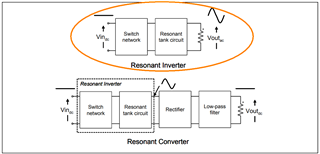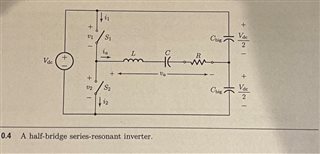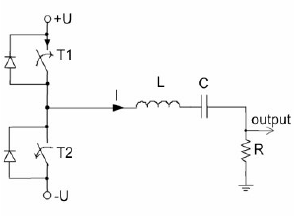I need a pure sine, soft-switched resonant constant-voltage DC/AC inverter, operating at 100 kHz, up to 20A @ 5V.
The load is inductive: several parallel coupled-inductors for galvanic isolation.
There should be a simple feedback loop to set constant voltage from 0V to 5V (i believe that's typically done by increasing the switching freq such that it's attenuated by the resonant circuit).
It should be a half-bridge or quarter-bridge design.
Seeking a lowest-parts-count solution.
Thx!




